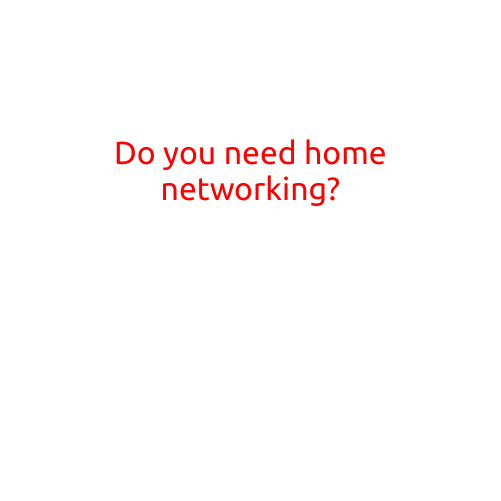
Do You Need Home Networking?
In today’s digital age, technology has become an integral part of our daily lives. With the rise of smartphones, laptops, tablets, and smart home devices, it’s no wonder why many households are looking for ways to connect all their devices to the internet and share files, printer, and other resources in a seamless manner. This is where home networking comes in.
What is Home Networking?
Home networking refers to the process of connecting multiple devices in your home or office to a single network, allowing them to communicate and share resources with each other. This can include devices such as computers, smartphones, gaming consoles, smart TVs, and even devices like thermostats and security cameras.
Why Do You Need Home Networking?
You may wonder if home networking is really necessary. If you only need to connect one or two devices to the internet, a wired or wireless router can meet your needs. However, if you have multiple devices and a large household, home networking can bring several benefits:
- Convenience: With a networked setup, you can access all your devices and share files, photos, and videos with ease, without having to physically move devices or cables around.
- Efficiency: Home networking allows you to stream music, videos, and online content to different devices, freeing up bandwidth and reducing congestion on your internet connection.
- Security: Home networking enables you to set up access controls, allowing you to restrict certain devices or users from accessing certain parts of the network.
- Cost Savings: By sharing a single internet connection, you can reduce your overall internet costs by not having to purchase separate plans for each device.
How to Set Up Home Networking
Setting up home networking is relatively easy and straightforward. Here are some steps to help you get started:
- Plan Your Network: Determine the devices you want to connect, the layout of your home, and the number of devices you’ll need to accommodate.
- Choose a Networking Solution: Decide between a wired (Ethernet) or wireless (Wi-Fi) network, depending on your needs and budget.
- Set Up Your Router: Place your router in a central location and connect it to your modem and devices.
- Configure Your Network: Set up your network name, password, and access controls using your router’s web interface.
- Install Network Devices: Install network Cards (NICs) or wireless adapters in your devices to connect them to the network.
Conclusion
In conclusion, home networking is a vital part of modern living, offering numerous benefits for those with multiple devices and large households. With a simple setup and configuration process, anyone can create a seamless and efficient networked environment, without breaking the bank. So, do you need home networking? If you have multiple devices and want to streamline your digital lifestyle, the answer is yes!





